Russia: Spiritual Renewal
The seeds of spiritual renewal, planted in the previous century especially through the work of Saint Paisy Velichkovsky, blossomed in Russia in the 19th century, even though the Church continued to live under the domination of the State. While the Church was subject to strict governmental control and censorship, and while there was no patriarch and no church councils during the entire century, the life of faith continued to show itself in the lives of the Russian saints, missionaries, theologians, and writers of the period.
Many of the disciples of Saint Paisy Velichkovsky in Moldavia returned to Russia in 1801 after the new young Tsar Alexander I (r. 1801–1825) granted political pardon to those who had fled from Russia in the previous years. These disciples spread the ideals and practices of the Non-Possessors—contemplation and mysticism (hesychasm) in hermitages and small monasteries (sketes), spiritual eldership, healing and prophetic gifts, and missionary zeal—all of which had been virtually submerged in Russia ever since the victory of the Possessors in the 16th century. It has been said of Saint Paisy that he “was for Russian monasticism at the end of the eighteenth and in the nineteenth centuries, as well as for contemporary monks living a true monastic life, the same as Saint Anthony the Great was for the Egyptian monks and the desert dwellers of the Levant. From him stems also that great tradition of Optina elders, headed by Hieromonk Leonid.”
The Elders of Optina
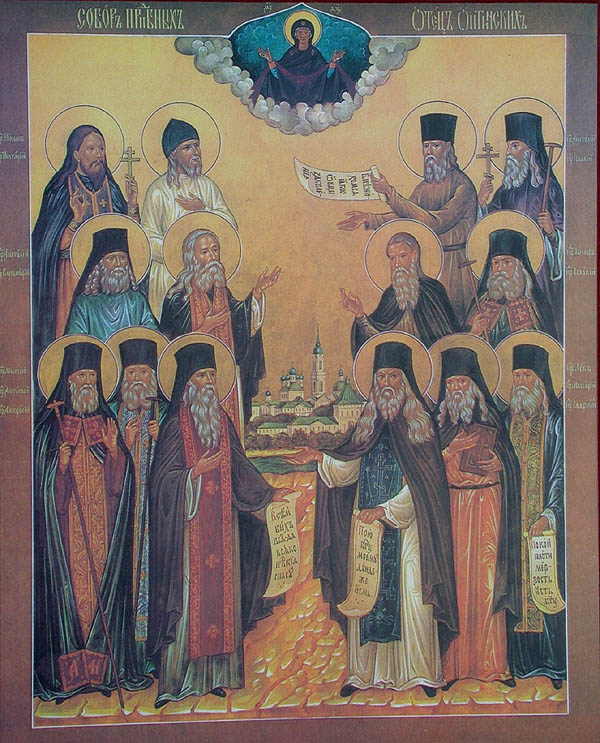
The Optina Pustyn Monastery had dwindled to almost nothing by the end of the 18th century, but Metropolitan Platon of Moscow, seeing its potential, sent a disciple of Saint Paisy, named Avramy, to go there and direct the rebuilding process. The first in the illustrious line of holy, clairvoyant Optina elders (startsi) was Elder Leonid (1768–1841), who came there in 1829 after spending some time at the Monastery of Valaam which had sent the famous missionary team to Alaska, including Saint Herman. Elder Leonid suffered great persecution from his fellow monks, who were not used to the practice of spiritual eldership, and who perhaps resented the many visitors who came to the holy elder seeking spiritual guidance. Eventually Metropolitan Philaret of Kiev intervened to defend him.
At his death, Elder Leonid was followed by Saint Makary (1788–1860) in the office of staretz at Optina. An intellectual from the gentry class, Makary, according to John Dunlap, “carried on a vast correspondence with laymen and clergy from all over Russia. It was during Makary’s tenure as staretz that the Russian intelligensia began to flock to Optina, finding there the light which eluded them in Western philosophy and social action movements.”
Under the protection and patronage of the imposing Metropolitan Philaret of Moscow (r. 1821–1867), Saint Makary worked along with the famous Slavophile philosopher Ivan Kireevsky (1806–1856) and several excellent Patristic scholars and translators to publish in Russian a number of Patristic writings by Saint Isaac the Syrian, Saints Barsanuphius and John, Saint Mark the Ascetic, Saint Maximus the Confessor, Saint Theodore the Studite, Saint Symeon the New Theologian, Saint Gregory of Sinai, and others. Saint Makary wrote to one of his spiritual children, “I have told you nothing that is an invention of my own. All of what I say comes from the writings of the Fathers.”
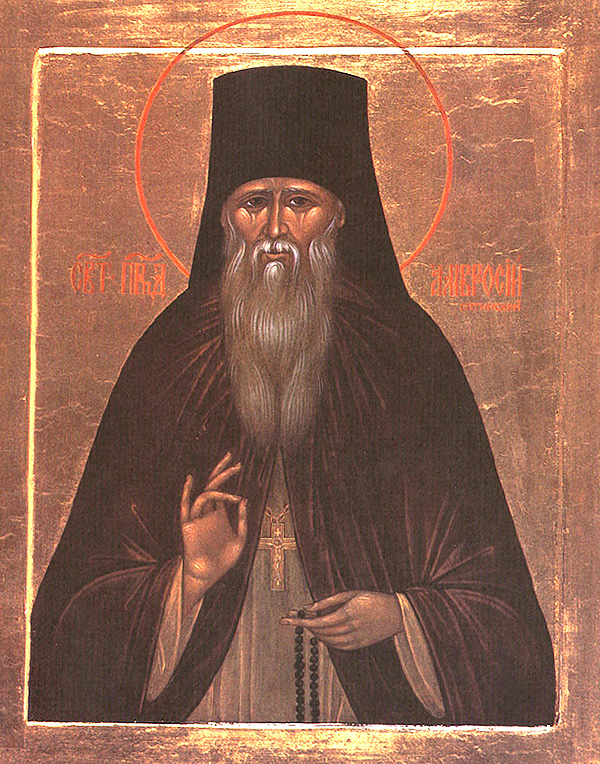
Saint Amvrosy (1812–1891) succeeded Saint Makary as staretz of Optina in 1865, after Saint Makary groomed him for this office during the many years he served as Saint Makary’s cell attendant. Amvrosy was so impressive as a spiritual teacher and living saint that the great Orthodox Christian novelist Fyodor Dostoevsky (1821–1881) modeled Elder Zossima in his masterwork, The Brothers Karamazov, upon him. Dostoevsky wrote that he also was inspired particularly by Saint Tikhon of Zadonsk of the previous century.
The great line of spiritual eldership at Optina continued into the 20th century with Elder Joseph (1837–1911), who had been Saint Amvrosy’s cell attendant for many years, Elder Anatoly (d. 1922), and Elder Nektary (d. 1928).
Saint Seraphim of Sarov
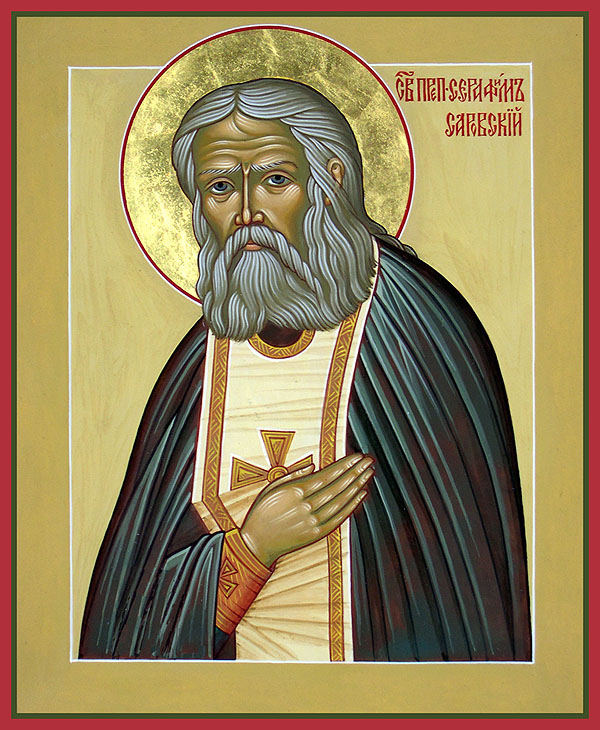
Probably the greatest Russian saint of the 19th century, who has been called by some the greatest saint in all of Russian Church history, was Saint Seraphim of Sarov (1759–1833). Saint Seraphim became a monk at the age of 19. He lived for many years by himself in a hut he built in the woods near the Sarov monastery, devoting himself to intense prayer, fasting, and spiritual exercise. He continued living there for several years even after being terribly beaten by robbers, who later repented after he forgave them.
In 1810 the abbot of the monastery ordered Saint Seraphim to return to the monastery where he continued his life of seclusion and silence, reading through the New Testament once a week, and being granted many spiritual visions. In 1825 he opened the doors of his enclosure to receive visitors, whom he greeted with the radiant joy of the resurrected Christ and the Holy Spirit. Soon the crowds of visitors were so great that he moved to the Near Hermitage, where he continued to minister to the massive stream of pilgrims—people from all walks of life, rich and poor, high-born and low-born—coming for healing and spiritual guidance. In his spiritual instructions St Seraphim identified the purpose of the Christian life as “the acquisition of the Holy Spirit.”
From Saint Seraphim’s conversation with
Nicholas Motovilov, a married layman
And Father Seraphim continued, “When the Spirit of God comes down and confers upon a person the fullness of His presence, the human soul, as does anything else that He may touch, overflows with an inexpressible joy. . . .
“Yet however comforting this joy which you now feel in your heart may be, it can never compare with that joy of which the Lord Himself spoke through the mouth of His Apostle when he said, ‘Eye has not seen, nor ear heard, nor have entered into the heart of man the things which God has prepared for those who love Him’ (1 Cor 2.9).
“We have been given a mere foretaste of that joy right now; and if it has filled our souls with such a sweetness, well-being, and happiness, then what shall we say of that joy which is prepared in Heaven for those who mourn here on earth? You too have shed enough tears in your life here on earth, and just look at the joy with which the Lord now consoles you!”
Other leading figures
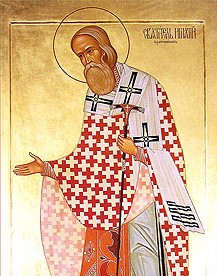
Within this movement of spiritual renewal were two bishop-monks who were especially noteworthy teachers of the ascetic life and the practice of the Jesus Prayer: Saint lgnaty Brianchaninov (1807–1867) and Saint Theophan the Recluse (1815–1894). Saint Ignaty is most well remembered for writing the famous Arena: An Offering to Contemporary Monasticism. He intended this work to be his last words to monks everywhere, but much of it is relevant for laypeople. In it he faithfully transmits the teachings of the Holy Fathers. As he says in his foreword to the work, “The teaching I offer is taken entirely from the sacred teaching of the holy Fathers of the Orthodox Church.” He draws especially upon Saint John of the Ladder, Saint Isaac the Syrian, and Saints Barsanuphius and John. He includes quotations from ascetic writers of every century, including his own—men such as Saint Seraphim of Sarov and Elder Leonid of Optina.
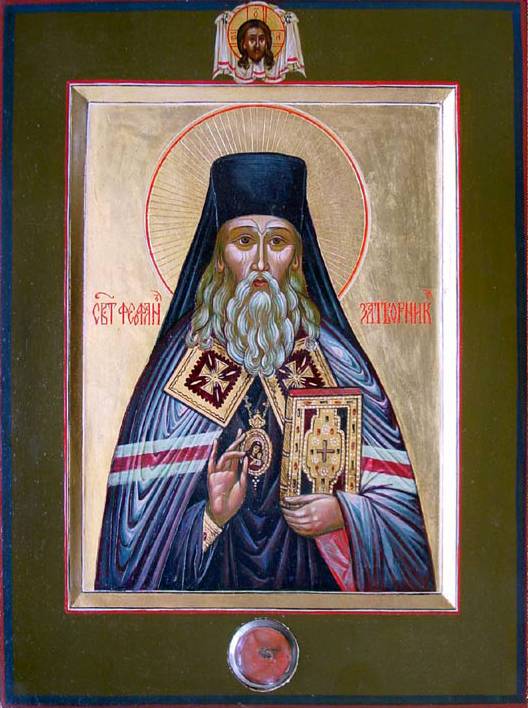
Like Saint Ignaty and Saint Tikhon of Zadonsk, Saint Theophan the Recluse also retired from active episcopal service to devote himself more entirely to prayer, contemplation, and writing letters and books. He wrote many works on the spiritual life, including The Path to Salvation, and The Spiritual Life and How to be Attuned to It which consists of a series of letters written to a young woman in the world who was one of his spiritual daughters. His greatest contribution was making a complete translation of the Philokalia into contemporary Russian.
Two other extremely popular spiritual writings in circulation in Russia in the latter half of the 19th century were The Way of the Pilgrim and The Pilgrim Continues His Way. They are a series of travel narratives written by an anonymous pilgrim who wandered across Russia, practicing the Jesus Prayer, which he first learned from a staretz. He then amplified his understanding through reading the Philokalia. He was advised to repeat the Jesus Prayer thousands of times a day.
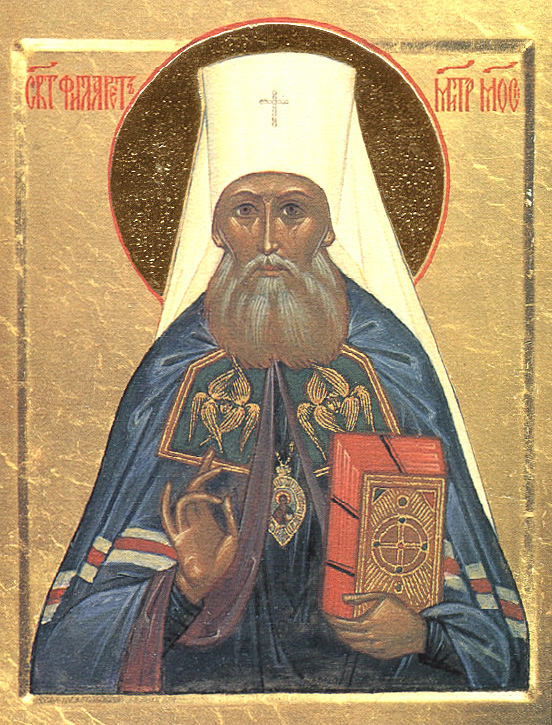
The two leading Russian theologians of the 19th century were the great churchman Saint Philaret (Drozdev), Metropolitan of Moscow (r. 1821–1867) and the layman Alexei Khomiakov (1804–1860). In 1840 Saint Philaret oversaw a reform of seminary education at the Moscow Academy, with all subjects now to be taught in Russian instead of Latin, and with more emphasis on Patristics. As mentioned above, his active support made possible the very significant Patristic publishing efforts led by Elder Makary of Optina and Ivan Kireevsky. He was a key figure in the beginning of the “return to the Fathers” in mid-19th century Russia, and the turning away from the Latin Scholasticism which had strongly influenced Russian theological education ever since Peter Moghila founded the Kiev Academy in the early 17th century.
Khomiakov’s writings—such as the famous essay “The Church is One”—were not originally published in Russia due to government censorship. Considered to be one of the most original and creative of modern theologians, Khomiakov was among the first to “discover” the traditional Patristic patterns of Orthodox theology and spiritual life. He encouraged Orthodox thinkers to break away from the “Western captivity” of scholastic theology and to meet the intellectual and spiritual world of the West with a sound knowledge and experience of the genuine Orthodox Tradition.
Besides Dostoevsky, another very important Russian novelist of the nineteenth century, who also wove profound spiritual themes into his novels and short stories, was Leo Tolstoy (1828–1910). His majestic War and Peace, about Napoleon’s invasion of Russia in 1812, is considered by some to be the greatest novel ever written. However, in his later years, in actively pursuing his burning interest in social reform, and in reaction to what he perceived as dry formalism in the Orthodox Church, he became convinced that the moral precepts given by Christ in the Sermon on the Mount, and working towards establishing a just society based upon brotherly love, were the essence of the Gospel, rather than Christ’s Incarnation, Crucifixion, Resurrection, and Second Coming. He was excommunicated by the Russian Church in 1901 for his rejection of the authentic Christian teaching—as seen, for example, in his own edited revision of the New Testament.
In addition to Kireevsky, Khomiakov, Dostoevsky, and Tolstoy, several other Russian religious thinkers/philosophers, such as Vladimir Soloviev (1853–1900), Nikolai Fedorov (1829–1903), and the brothers Sergei Troubetskoy (d. 1905) and Evgeny Troubetskoy (d. 1920), made important contributions to the intellectual and spiritual life of the nation. While attempting to create a distinctly Russian form of philosophy, incorporating certain elements from Russian Orthodoxy, these thinkers remained essentially Western-oriented in their basic approach. Still, they helped many of their fellow Russian intellectuals—especially among the Russian émigré community who fled to the West in the wake of the Bolshevik Revolution of 1917—to return to their Orthodox roots.
